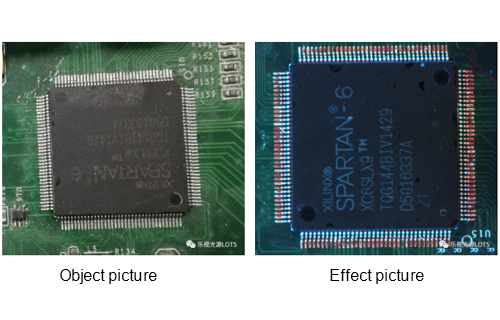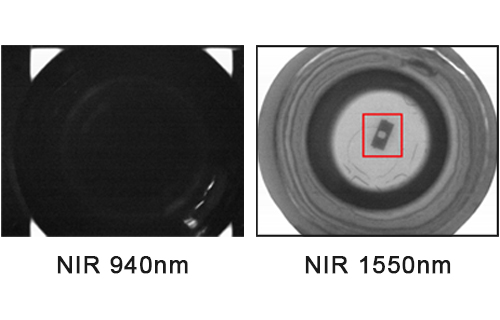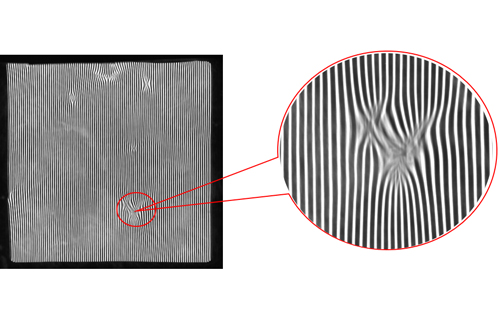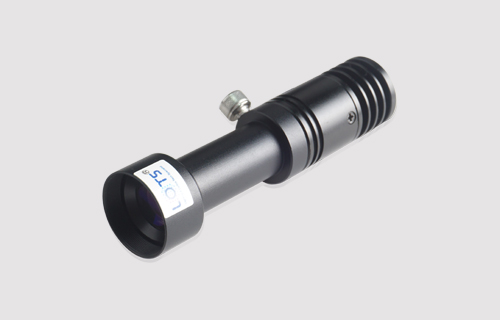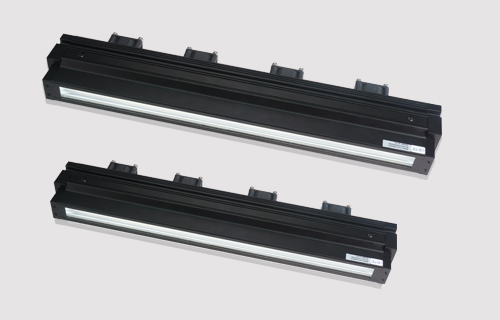Light technologies are at the heart of today´s world, enabling the most sophisticated processes and procedures. Novus Light editors have identified ten significant trends in the application of light technologies, each of which is the result of many small, incremental advances and all offer abundant opportunity.
Ten trends that top our list in 2019:
Brain imaging, Additive manufacturing, Quantum technologies, Augmented/virtual reality, Polarization cameras, Lidar sensing, Lighting control, Deep learning, Mini spectrometers, Smart factories.Brain imaging
The field of brain imaging is expanding as advancements are made in technologies such as holography, 3D imaging, photon counting, fiber optic sensing and implantable MRI imaging. The 3D imaging market alone is expected to grow nearly 25% over the next three years, with brain research being one of its many applications. Researchers at Tel Aviv University in Israel have developed a photon counting solution that improves the quality of rapid 2D and 3D imaging of neuronal activity in the living brain in an attempt to uncover the inner working of the interface between neurons and blood vessels.Holography is another area of opportunity in brain research. University of California Berkeley neuroscientist are using holographic laser light to activate neurons in the brain, simulating the pattern and rhythm of actual brain response. Alan Mardinly, a postdoctoral fellow in the US Berkeley lab of Hillel Adesnik said, â€This is one of the first steps in a long road to develop a technology that could be a virtual brain implant with additional senses or enhanced senses.â€
At the University of Arizona (US) researchers have developed fiber optic sensors that could offer an alternative to magnetic resonance imaging (MRI) systems used to map brain activity. Because the system would be portable, low cost and able to operate at room temperature and in unshielded environments, it could be used right at the point of impactâ€" either in sports to diagnose concussions or in conflict zones where explosives cause brain injury.
In other work, researchers at MIT have developed a tiny sensor that can be implanted into the brain, interacting with an MIR scanner outside the body. The device doesn´t require power or a wired connection into the brain, and it can detect tiny electrical current in the brain and optical signals produce by luminescent proteins.
Additive manufacturing
An emerging technology is additive manufacturing or 3D printing, which is forecast to be growing at more than 26% a year through 2023 It´s being used in everything from metal parts manufacturing in the automotive industry to design and manufacturing of custom optics to the fabrication of artificial limbs, blood vessels, and heart valves.In laser additive manufacturing, lasers play a significant role because they focus large amounts of energy on a wide range of material powders, fusing them into 3D parts. The lasers fuse the materials, layer by layer until the part is finished. Laser Powder Bed Fusion (LPBF), also known as Selective Laser Melting (SLM), is a process in focus in the AutoAdd project the Fraunhofer Institute for Laser Technology ILT in Aachen, Germany. The AutoAdd project intends to make it easier for the automotive industry to use additive manufacturing by integrating the LPF process chain in the automotive mass production environment reduce unit costs. Read more in â€Paving the Way for Additive Manufacturing for the Automotive Industry.â€
On the medical front, additive manufacturing is being used for many types of implantsâ€" from facial to orthopedic to dental and more. The market for 3D printed medical devices is projected to be nearly $10 billion by 2025. Researchers in the UK have used additive manufacturing to discover how our bones grow. Built up in a process that mimicked real bone growth, they not only learned how bones grow, but they´ve learned what creates the bones resistance to shocks and bending, which may result in more natural implants that could replace the metal and plastic implants used today. The research may also help in understanding osteoporosis and bone deterioration.
Quantum technologies
Digital technology has changed computers, communications equipment, security, medicine and more. Now we move beyond digital and into quantum technologies. Quantum mechanics describes the smallest things in the universeâ€" sub-atomic particles such as protons, neutrons, electrons.  Much funding is going toward development of quantum technology and projects that will bring the technology to commercialization. In Europe, for example, the Quantum Flagship is a 1 billion Euro, 10-year initiative that will involve more than 5000 European researchers. UNIQORN is one of the many projects that fall under the Quantum Flagship, and it will focus on quantum communication systems. Its mission is to provide the enabling photonic technology to accommodate quantum communications by putting complex systems into millimeter-size chips. Â
And yet another European group is joining forces on developing artificial intelligence and quantum computing. Imec, CEA-Leta signed an agreement to focus on developing, testing and experimenting with neuromorphic and quantum computing, intending to deliver a digital hardware computing toolbox that can by used by European industry partners to innovate in various applications, from personalized healthcare and smart mobility to new manufacturing industry and smart energy sectors.
And while many research groups are forming, a group of Australian, Italian and Swiss scientists developed a photonic chip, demonstrating possibly for the first time that quantum information can be encoded, processed and transferred at a distance with topological circuits on the chip.
Augmented reality/virtual reality
As digital technologies become a part of our everyday lives, we will be increasingly coming into contact with virtual, augmented and even mixed reality. What are they and how do they differ? Virtual reality immerses the user in another world. Wearing a head up or head-mounted display, the user is placed in a virtual environment, such as in a video game or in a healthcare setting. Augmented reality (AR) overlays images on a view of the real world. Mixed reality, as the name implies, mixes the virtual with the real world, allowing the user to interact with software-generated images. More information is provided in Coatings for Virtual Reality, Augmented Reality & Mixed Reality.VRHealth provides virtual reality solutions to hospitals, rehabilitation centers, and doctor´s offices. VR applications are available for pain management, rehabilitation exercises, therapy for children with ADHD and more.
The VOSTARS (Video Optical See-Through Augmented Reality Surgical System) project is developing a medical visor for use by surgeons. By superimposing a patient´s x-ray in 3D unison with their body, surgeons don´t have to look away during operation. The visor also presents a patient´s anesthetic data, heart rate, body temperature, and other vitals. The project forecasts an improvement in accuracy as well as reduced time in the operating room.
Opportunities are boundless as AR/VR/MR applications grow. Head up displays are integral to the new applications, and as a result, head up display market is expected to exceed $7 Billion by 2024, growing at a CAGR of more than 19% in that period.
Polarization cameras
Today we are seeing a high degree of specialization on the camera front, according to Senior Editor, Dave Wilson. â€Gone are the days when bigger CMOS imagers were all that mattered. Today it's all about what the imager or camera can do as well, hence the emergence of highly specialized images that can be used in time of flight imaging cameras and polarized cameras.Polarization is the process of transforming unpolarized light into polarized, meaning it takes a light wave that is vibrating in more than one plane and transforms it into light waves with vibrations occurring in a single plane. Polarized cameras acquire images the way that insects do. Insects and other creatures, like the mantis shrimp, has a visual system that is able to sense polarization information with high dynamic range photosensitive cells.
Polarized cameras are useful in industrial inspection where there may be low contrast or high reflection. Polarization cameras can filter the angles of polarization form the light that may be reflected off of the surfaces of different materials.
Sony took a step forward with the advent of the Sony global shutter iMX250MZR CMOS sensor, which provides camera manufacturers with a ready solution, rather than having to mount a rotating mechanical polarizing filter wheel above the sensor in the camera. For more detail on this advance as well as leading manufacturers of polarization cameras, read "Industrial Vision Gets Polarized."
Lidar sensing
The global automotive lidar market is expected to grow at a CAGR of 29.6% over the next ten years, according to a recent report by ResearchandMarkets. The market is driven by the rise in autonomous vehicles and Advanced Driver Assist Systems (ADAS), especially in light of the growing number of safety incidents with driverless vehicles.Lidar stands for light detection and ranging, and is used in place of or in addition to cameras, radar, and ultrasonic sensors. The article â€Sensors Map the Path to Fully Autonomous Vehicles†covers how these sensor technologies complement each other and provide the best possible reliability for daytime and nighttime driving.
The opportunities in this market seem boundless. Well-known optics companies, such as Jenoptik, are supplying a range of optical elements that go into advanced lidar systems. Hamamatsu is supplying a four-channel pulsed laser diode, which can be used at the light source for in-vehicle lidar modules, allowing for more accurate measurement of objects at far distances. Laser Components, a supplier of laser and optoelectronic components, is working with the Fraunhofer Institute for Microelectronic Circuits and Systems IMS, to collaborate on lidar development. Excelitas is providing a surface mount device pulsed laser diode array as a key building block of next-generation lidar systems. Coatings companies, such as AccuCoat, are addressing the unique optical coating needs in lidar systems. See the article â€Lidar Coatings Take Many Forms.†And the list goes on as the technology expands and market grows.
Lighting control
In today´s lighting, it´s all about control. The characteristics of solid-state lighting enable control over light intensity, color temperature, hue, power consumption and more.  Lighting control can be built into the LED driver, or handled by a computer or off in the internet cloud. The articles â€Smart Fixture Controls in Intelligent Lighting†and â€Dueling Control Standards in Intelligent Lighting†detail the considerations in today´s lighting control.Applications of lighting control range from smart lighting in buildings to industrial machine vision to indoor agriculture. In machine vision, consistent light levels are critical because machine vision systems must monitor, check, analyze and classify very precisely. Read more in â€The Need for Precision Lighting Control in Machine Vision.â€Â An indoor agricultural application that uses OLED controllers is described in â€OLED Could Boost Vertical Farm Efficiency by 20%â€.
Cortet, a specialist in smart building internet of things (IoT) technologies, developed the Cortet Lighting Control Solution, which can be controlled by a mobile app. Gardasoft offers a series of lighting controllers for high-speed computational imaging, which can drive lighting that allows a rapid sequence of images in machine vision applications, with different illumination angles to be acquired by a smart camera.
Deep learning
â€What we have is a revolution in the software business with many manufacturers and companies investigating machine learning and deep learning,†says Senior Editor, Dave Wilson. There is a difference between the two, with machine learning software systems using support vector machines (SVMs) or Random Forest algorithms and deep learning using Convolutional Neural Networks (CNNs) -- a class of neural networks highly suited to analyzing visual imagery. Wilson said that, in his humble opinion, â€deep learning (CNN) systems will become very important -- very soon.â€According to Girish Venkataramani, a development manager at MathWorks, deep learning is implemented using neural network architectures. Used in a vision system, deep learning software will be taught to perform very specific functions, identifying complex features, and classifying the images accordingly. The article Deep Learning Teams up with Vision details the benefits of a trained vision system. We´ve seen major manufacturing moving in the deep learning direction. Hyundai CRADLE, Hyundai Motor Company´s corporate venturing and open innovation business, recently invested in allegro.ai, a technology company that specializes in deep learning. Matrox Imaging recently announced that its renowned flowchart-based vision application software, Matrox Design Assistant X integrates new functionality including image classification using deep learning. And EyeVision is an example of machine vision software that offers a license plate recognition application that uses deep learning to recognize number plates as well as make and model of cars.
Mini spectrometers
Spectroscopy is a technique used to measure light intensity in the UV, VIS, NIR and IR wavelengths. It´s used in a wide range of applications including medical, environmental, security, pharmacology and more. Spectroscopy dates back to Isaac Newton´s optical experiment in the 1600s, but fast forward about 350 years, and today´s trend in spectroscopy is small mini- and micro-spectrometers that enable real-time, on-site measurement.
Even in tiny packages, small spectrometers feature high-end optical design that increases throughput and stability while reducing stray light and maximizing optical resolution. An example of the developments in this field is demonstrated by the European project InSPECT, in which researchers developed two classes of spectrometer systems: a compact cubic-inch spectrometer based on diffractive optics and a spectrometer system based on Si-based TriPleX waveguide technology integrating the spectrometer onto a photonic integrated circuit. Additionally, a new class of broadband light source has been developed based on solid-state laser excitation of luminescent materials. The new generation of cost-effective solutions brings spectral sensing to surgeons inside the operating room, to doctors in consulting rooms and to clinicians in remote healthcare centers.
In addition to producing compact spectrometers, manufacturers are offering application-oriented products designed for a particular solution, and also made easy enough that they can be used by non-spectroscopy experts
Smart factory
Smart factory, Industry 4.0, Internet of Thingsâ€"these are all relatively new terms that describe the modern way of manufacturing. Today we´re living in what´s being called the 4th industrial revolution, hence Industry 4.0. The first revolution saw early mechanization run by water and steam power. In the second, mass production began with assembly lines run by electricity. The third was the new wave of computerization and automation. And today, the 4th revolution includes cyber-physical systems, connected by the Internet and cloud computing.
At the Assembly Show, Techcon displayed a Smart Dispensing Robot that incorporates many elements of the smart factory: it is automated to perform a specific application, it has PC-based software that makes it easy to program and to operate, its vision system allows it to correct part misalignment, pattern recognition helps shorten programming time, and it has Ethernet and WiFi interfaces so it can be configured, monitored and controlled from anywhere in the world.
Lighting the way
Taken individually, each trend represents important developments, useful applications and much promise for expanding opportunities. Collectively these ten trends highlight the significance of light technologies in nearly every aspect of our lives, and they will certainly play an increasing role into the future.Written by Anne Fischer, Managing Editor, Novus Light Technologies Today

